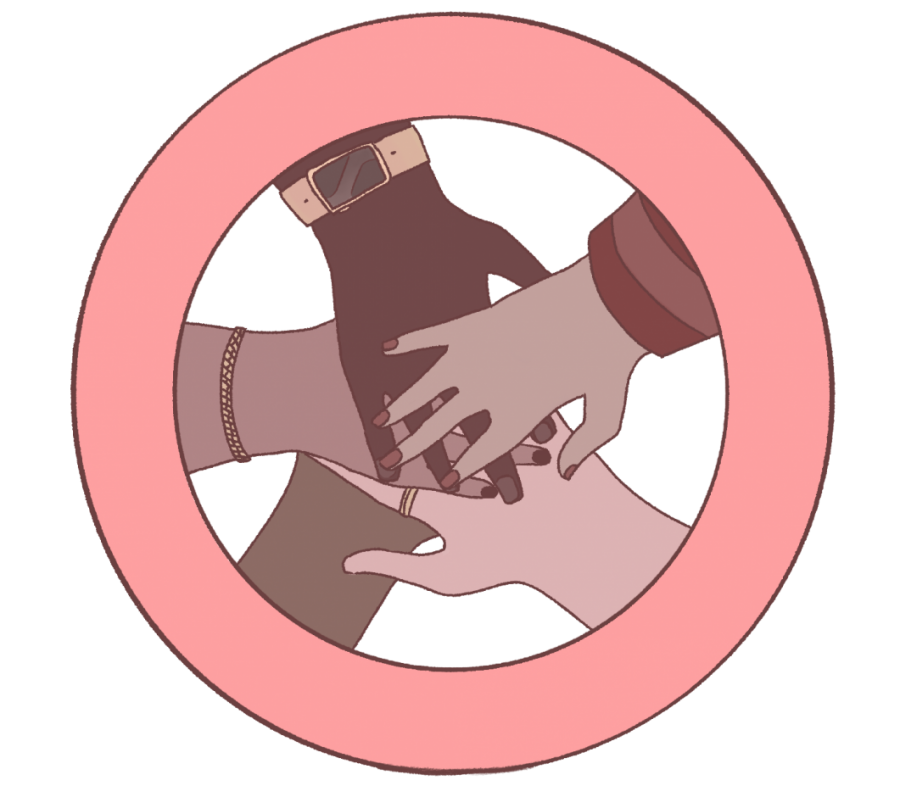FOCUS: GENDER EQUALITY: SCHS discusses how misconceptions around feminism ultimately negatively affects the movement as a whole
Feminism, as defined by the Merriam-Webster Dictionary is “the theory of the political, economic, and social equality of the sexes.” Since the Seneca Falls Convention in 1848 to the #MeToo Movement, feminism is a change that has been going strong over the years. Many students and staff at SCHS believe the development of feminism is one that directly affects them and their peers.
“Feminism is important to me because growing up, there were things I wanted to do, but I was told I couldn’t because I was a girl, such as playing sports like football,” freshman Kylie Williams said. “Feminism helps erase those stereotypes and fosters equality.”
Sophomore Abhiritika Rala agrees and believes that gender should not determine one’s access to equal rights and opportunities.
“I would define feminism as a basic fight for our (women’s) rights,” Rala said. “We are all equal, and gender shouldn’t define what I’m capable of or what I’m allowed to do.”
Feminism, like many other social justice movements, has been subjugated to numerous misconceptions, such as only women can be feminists, or that feminism is anti-men. Math teacher Taylor Burk believes that misconceptions about feminism harm the movement as a whole.
“Misconceptions hinder the progress and give it (feminism) a bad reputation,” Burk said. “There is definitely progress, but misconceptions can slow the progress down.”
Junior Riya Mehta believes that feminism gets a bad reputation now due to misogynistic ideas and misconceptions by incels, a group of men online who hate and berate women for not being romantically or sexually attracted to them. Oftentimes, misconceptions by incels create false and misogynistic ideas about feminism.
“I feel like the rise of the incel movement and the distortion of feminism by sexists and media has contributed to these misconceptions about feminism,” Mehta said. “If someone tells you that feminists are trying to discriminate against men, they are not a feminist and do not understand what the movement is about at all.”
One common misconception about feminism is that it creates inequality between women and men in favor of women. Although feminism focuses on uplifting women because they have been historically disadvantaged, this does not mean that it favors women. Instead, it creates equality between all genders.
“It’s like if you had two separate glasses you wanted to fill with water: one glass represents men, and one represents women. The male glass started with more water and began filling up faster than women, so if you want to bring the water level in both of those cups up to the same amount, you can’t just pour at the same rate, you need to add extra water to the women’s cup just to bring it to the same level,” senior Omri Shoshani said. “So when people see women’s colleges, feminist lectures and tax breaks for single mothers, it creates the illusion that they have more, but in reality, we’re just trying to bring the glasses to the same level so they can stay equal permanently.”
Despite opposition, the growth of modern feminism shows no sign of slowing. As Burk pointed out, there are many movies, television shows, books and other forms of media today that have women playing major roles that break female stereotypes. The movement has come far enough that women are receiving more representation rather than being subjected to minor roles.
“In movies, many females are in roles that were traditionally male,” Burk said.
According to UN Women, more feminists hope to emphasize the inclusivity of feminism by introducing intersectional feminism, a movement that advocates for gender equality to include people of all races, social classes, sexualities, religions, ethnicities and disability statuses. Intersectional feminism also recognizes how those factors were overlooked by traditional feminism, which historically only benefited wealthy and straight white women during the first waves of feminism.
“Intersectional feminism is extremely important because it brings in other elements of trying to work for equality,” English teacher Daniel Eaton said. “At first, feminism was about white women only, but over the last hundred of years, there was a push to be more inclusive with feminism, and using the term ‘intersection’ allows for the inclusivity of other gender identities for what feminism stands for.”
Mehta believes that by emphasizing the strides that women and suffragists of color made for the movement, a more inclusive and intersectional feminism can be achieved.
“This (recognizing the accomplishments of suffragists of color) is important because it is often overlooked. Everyone knows Elizabeth Cady Stanton and Susan B. Anthony,” Mehta said. “But do you know Sojourner Truth or Charlotte Forten? White feminists furthered their movement off the backs of African Americans and excluded them from the movement.”
Despite misconceptions, feminism has grown since its first waves to foster inclusivity and inspire equality in today’s society through diversity. As a movement, it has made immense progress, and students like Mehta hope to help that growth.
“I hope that I can overcome these misunderstandings as the momentum of feminism increases,” Mehta said. “We really just want to level the playing field and create a world where men and women of all genders and ethnicities have equal opportunity.”


